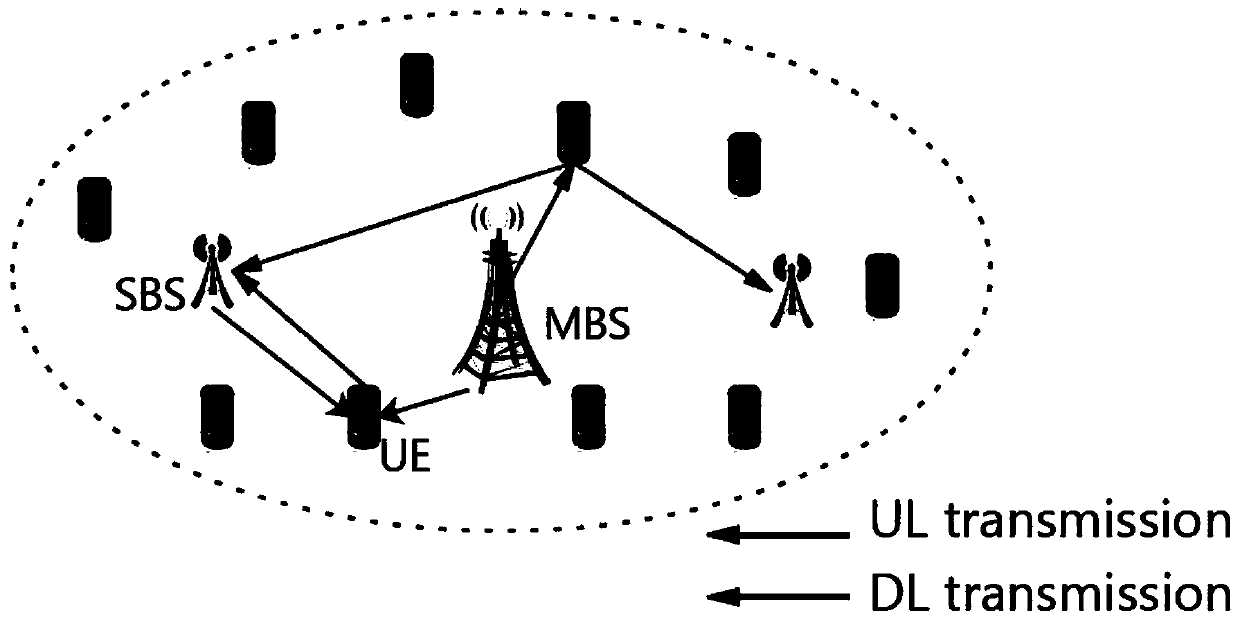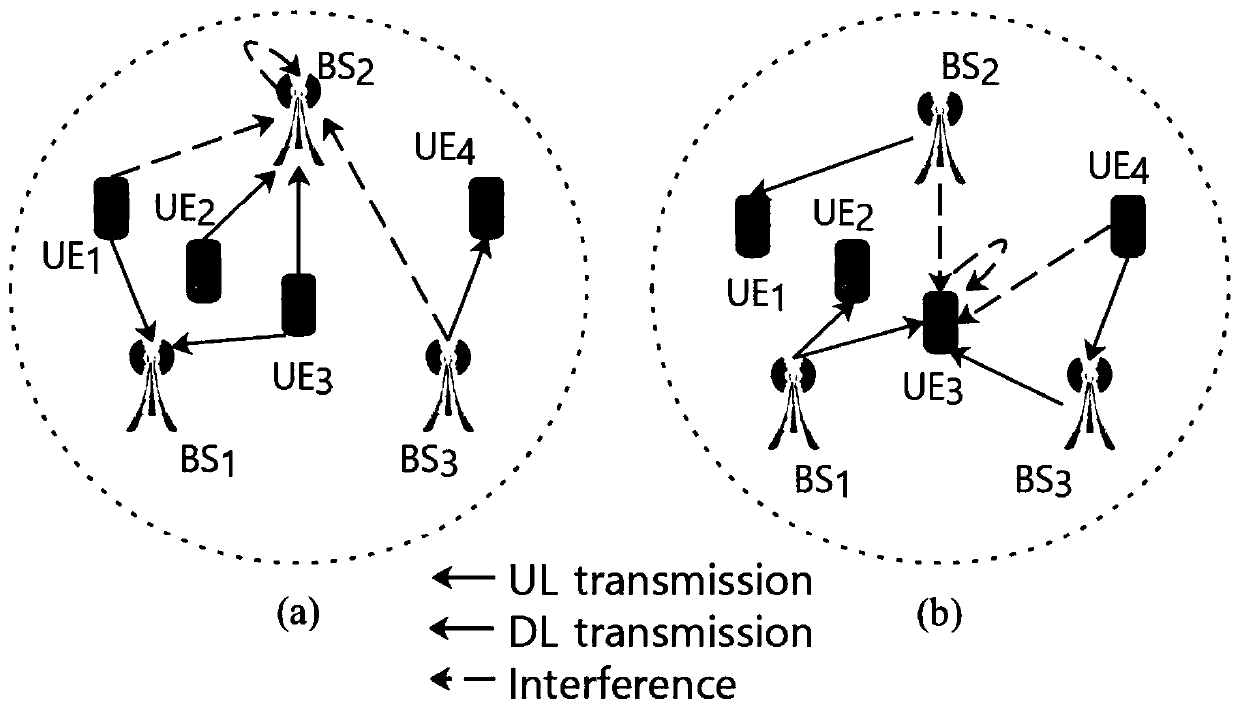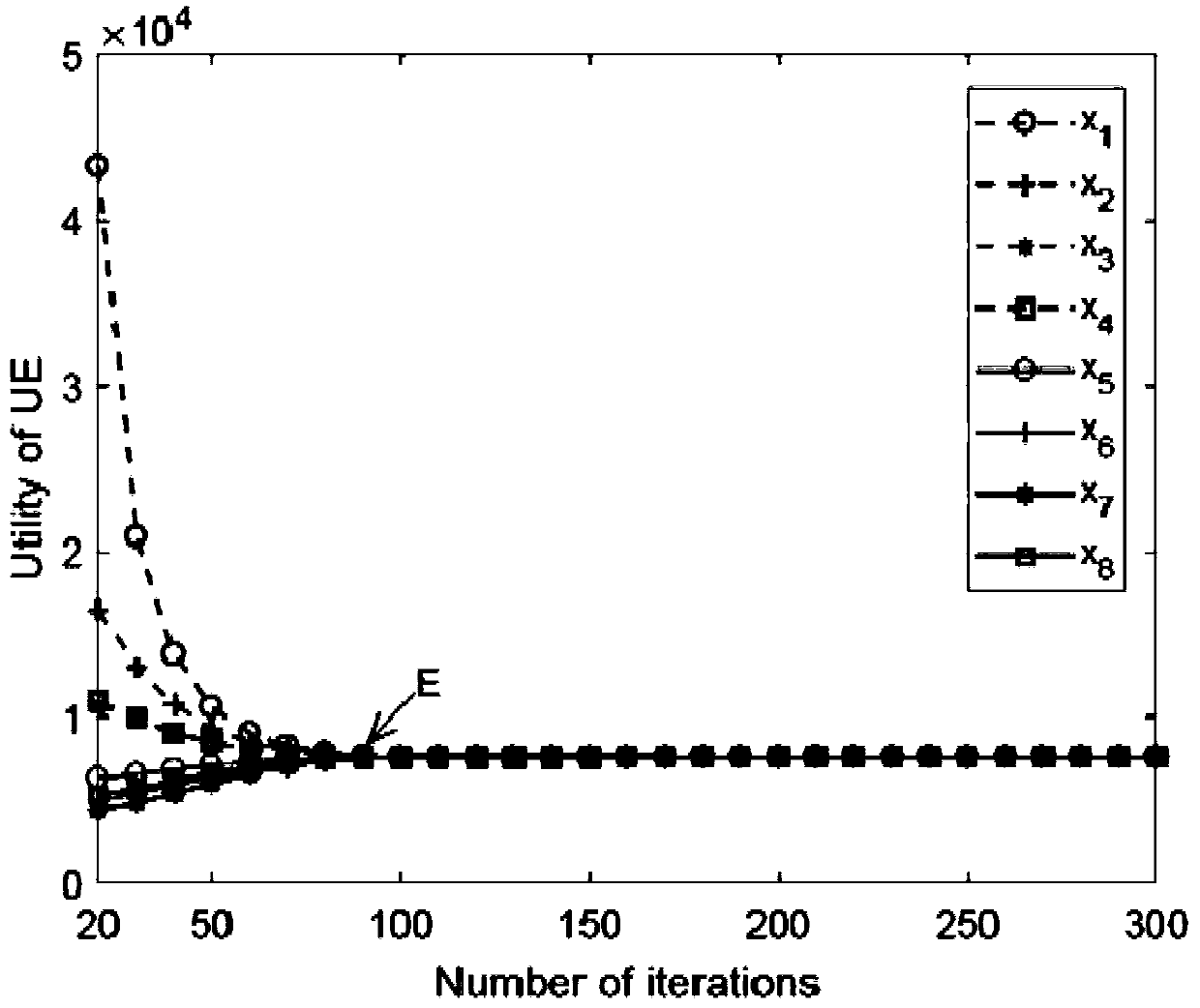Decoupling multi-access method based on evolutionary game theory in ultra-dense network
An ultra-dense network, evolutionary game technology, applied in the field of ultra-dense network user access and resource allocation
- Summary
- Abstract
- Description
- Claims
- Application Information
AI Technical Summary
Problems solved by technology
Method used
Image
Examples
Embodiment Construction
[0034] The present invention will be further described below in conjunction with the accompanying drawings.
[0035] The present invention mainly comprises following several parts:
[0036] 1. Analyze the uplink and downlink interference of base stations and users in the same cell, as well as the data transmission rate:
[0037] Assuming that there are K base stations (including one macro base station MBS and K-1 small base stations SBS) and N users in the network cell, the distribution of each node and the decoupled multiple access mechanism are as follows: figure 1 shown. Decoupling multiple access means that users can access different multiple base stations during uplink and downlink, and different types of interference will be generated at this time, such as figure 2 shown. For a given user i accessing a base station k, the interference suffered by base station k during uplink is:
[0038]
[0039] in, represents the interference from other downlink base stations...
PUM
 Login to View More
Login to View More Abstract
Description
Claims
Application Information
 Login to View More
Login to View More - R&D
- Intellectual Property
- Life Sciences
- Materials
- Tech Scout
- Unparalleled Data Quality
- Higher Quality Content
- 60% Fewer Hallucinations
Browse by: Latest US Patents, China's latest patents, Technical Efficacy Thesaurus, Application Domain, Technology Topic, Popular Technical Reports.
© 2025 PatSnap. All rights reserved.Legal|Privacy policy|Modern Slavery Act Transparency Statement|Sitemap|About US| Contact US: help@patsnap.com



